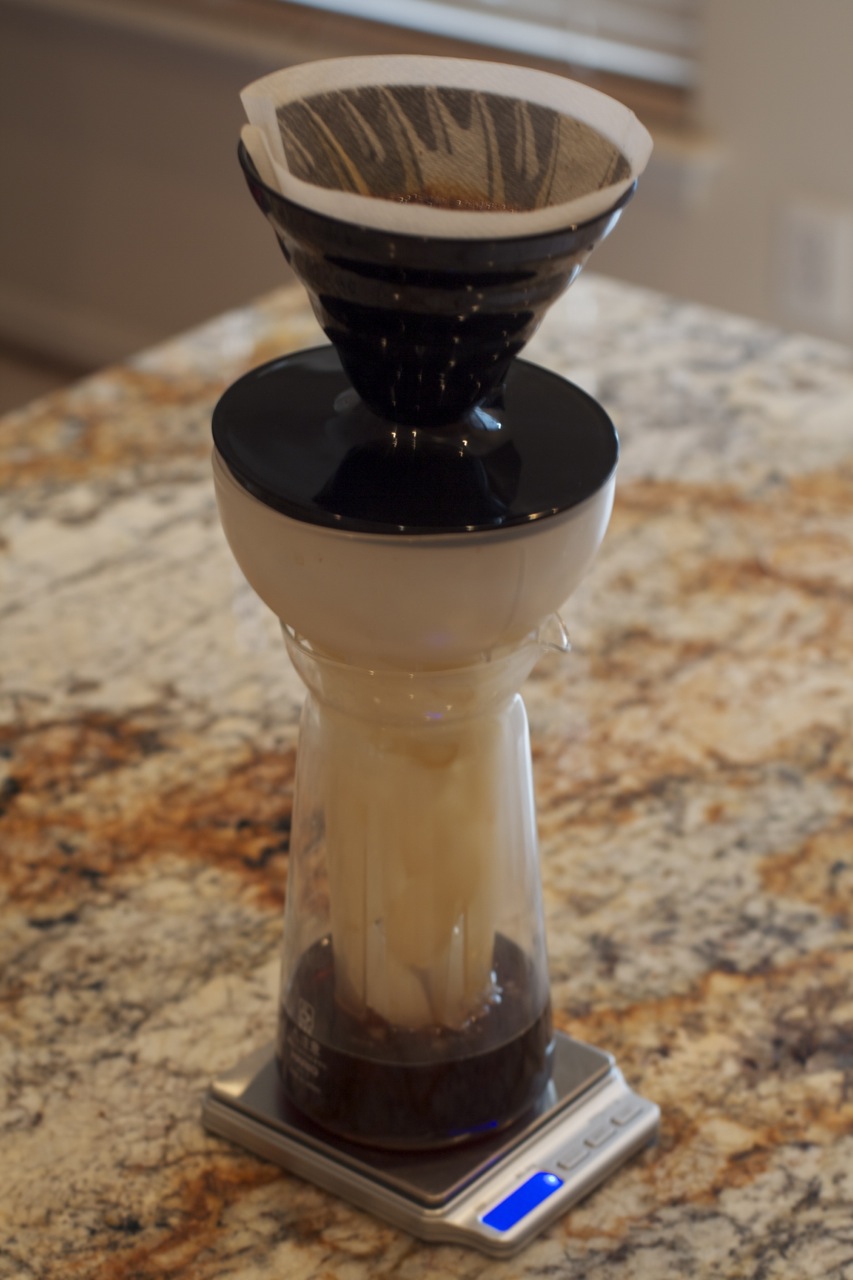One of the first concepts to understand if you want to make consistently-good coffee at home is the coffee-to-water ratio, or brew ratio. According to the requirements of the Specialty Coffee Association of America's (SCAA) Golden Cup Award, a brew ratio in the range of 16 - 20 parts water to one part ground coffee will produce the best cup of coffee.

The Coffee Brewing Center, during its decades of operation (1952-1975), conducted numerous research projects on all aspects of coffee brewing. Their most significant contribution to our current knowledge of coffee is that the vast majority of coffee drinkers prefer brewed coffee prepared from 3.25 - 4.25 ounces of coffee for each 64 fluid ounces of water. This ratio results in a coffee with 1.15% - 1.35% dissolved coffee solids. From these they established the Golden Cup Award.
So how do we put this to use?
First, if you don't have a decent set of digital scales, you should get some. I have two of these and love them. They're compact, sleek, and inexpensive and weigh within a tenth of a gram.
Speaking of grams, I use grams as the unit of measure for both the beans and water. This way I don't have to worry about how many grams of beans I need to make two cups of brewed coffee, which would force me to first convert one cup (volume) to grams (mass). Instead, I know that one of my mugs holds 100g of water so my target amount of brewed coffee is 100g. Therefore I work backwards from the 100g divided by 17 to get 5.9g of beans and I would normally round that up to 6. Now I know exactly how much beans and water I need to make one brewed coffee for myself. If I wanted to make two, I just multiply both numbers by two and use 12g of beans and 200g of water.
Compare my method to SCAA's Golden Cup Award requirements:
In order to qualify for the Golden Cup Award, the coffee brewing formula must fall between 3.25 and 4.25 ounces in weight (92 grams and 120 grams, respectively) of coffee per 64 fluid ounces of water (1.9 L), resulting in a coffee strength between 1.15% to 1.35% dissolved coffee flavoring material.
Sounds great but if I need to use 100g of coffee beans, how much water do I need using their information above? Or if I wanted to make 30 ounces of brewed coffee how much beans and water do I use? It's too confusing. They mention ounces, grams, fluid ounces and liters and in doing so, they have mixed units of measure with methods of measurement (volume versus mass). To simplify it all, I just weigh everything in grams and shoot for a water-to-coffee ratio somewhere between 16 - 20:1 depending on what tastes best.
How is this process beneficial? If you're brewing at home, once you find the brew ratio that you really like, you can stick with it and make the coffee the same way consistently, every day. It wont be great one day, weak the next, and so strong it walks out the door the next. Instead, it will be consistently good. If you work at a coffee shop, you not only get a consistent product, but you can also reduce waste; if you know exactly how much coffee and water it takes to make two pour-overs and a customer orders two pour-overs, then you won't waste half a Chemex in guessing and "erring on the side of caution."
To summarize:
- Your target brew ratio is in the range of 16 - 20:1 water-to-ground coffee.
- Perform all measurements using the same method (mass versus volume) and in the same units (grams versus ounces).
- Always experiment with the ratio with each new coffee type (Ethiopian versus Colombian)
